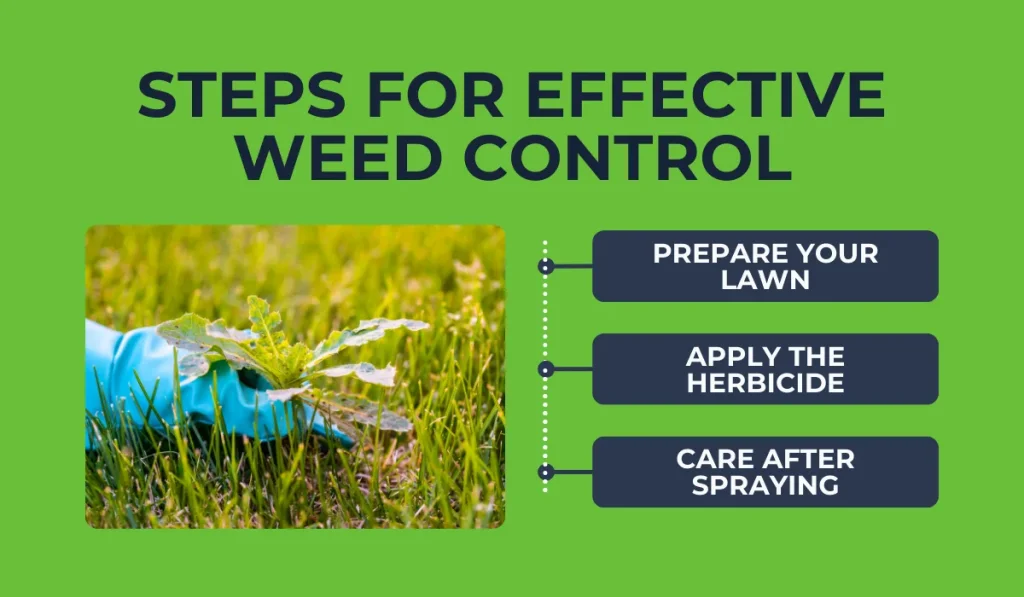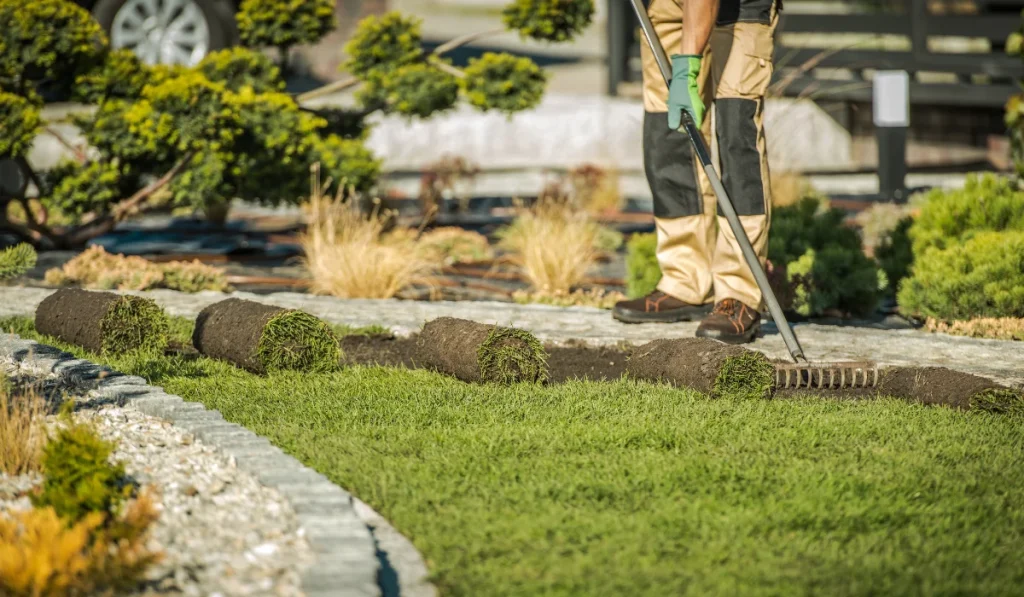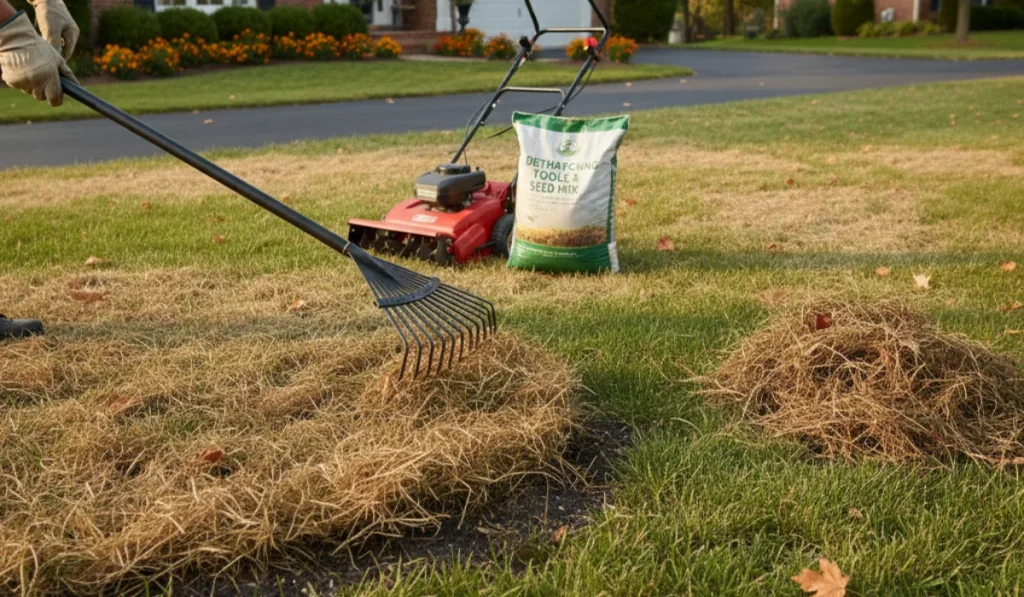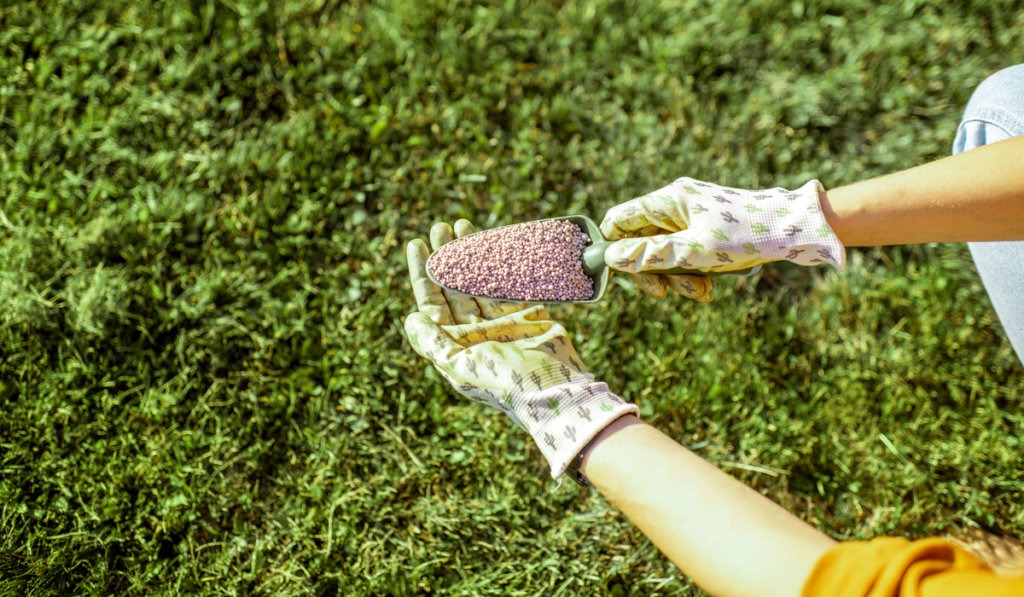If you want a clean, weed-free lawn, you’re not alone. Many homeowners rely on weed killers like post-emergent herbicides to target stubborn weeds like crabgrass, dandelions, and chickweed. But before you spray, it’s important to know if mowing your lawn beforehand will help or hurt your results.
Here’s a simple guide to help you get the best out of your lawn care routine.
Key Takeaways
- Post-emergent herbicides need weeds with enough leaf surface, so do not mow before spraying for better results.
- Mowing stresses grass and makes weeds grow back faster, making herbicides less effective and harder to work properly.
- Water your lawn, avoid mowing for a few days, and spray herbicide to target weeds more effectively.
- Combining pre-emergent and post-emergent herbicides and following instructions helps control weeds and protect your lawn year-round.
Is Mowing Before Spraying Post-Emergent Herbicide a Good Idea?
For the best results, wait 2–3 days after mowing before you spray post-emergent herbicides. This gives the weeds enough time to regrow some leaf surface for it to stick to. Hold off on mowing for 2–3 days after spraying so it has time to work its way into the root system and kill weeds completely.
Here’s why this rule of thumb makes sense:
Less Leaf Surface for the Herbicide
Post-emergent herbicides need to stick to weed leaves to work properly.
The leaves soak up the herbicide, allowing it to move through the plant and attack its root system. If you mow your lawn and cut off too much of the weeds, you reduce the amount of leaf surface available for the herbicide to do its job.
Stress on Your Lawn
Mowing can stress your grass, especially turfgrass like tall fescue or season lawns that are sensitive to heat or over-trimming. Applying herbicides right after mowing adds extra stress. As a result, it may damage your grass blades.
Weeds Grow Back
Mowing can cause weeds like nutsedge and spurge to grow back faster.
When weeds are cut, they send out new shoots or sprouts, which can make them harder to control. This new growth may not have enough leaf surface for herbicides to stick to, so the new growth reduces the herbicide’s effectiveness.
3 Steps for Effective Weed Control

To get rid of stubborn weeds, follow these simple steps for a successful lawn treatment:
1. Prepare Your Lawn
Water your lawn a day or two before applying herbicide. This keeps your turfgrass healthy and makes weeds easier to target. Avoid mowing for a few days before spraying so weeds have enough leaf surface.
Note that too much leaf surface can prevent the herbicide from getting into the root system, so be sure your grass does not grow more than 3-4” high.
2. Apply the Herbicide
Use a sprayer for liquid herbicide application or a spreader for granular products.
Target types of weeds with selective herbicides. For example, some herbicides are effective against crabgrass, while others work better for broadleaf weeds like dandelions or henbit.
Note: Always read and follow the herbicide label instructions for proper use, application rates, and safety guidelines. If you’re unsure which product to choose, consult a licensed professional for advice.
3. Care After Spraying
Don’t mow for at least 48 hours after spraying. This lets the herbicide penetrate the weeds fully. Bag your clippings the next time you mow to prevent spreading herbicide residue.
Common Mistakes to Avoid When Spraying Post-Emergent Herbicides
Here are some easy-to-avoid mistakes that could make your weed control less effective:
- Cutting Grass Too Short: Mowing too low removes too much leaf surface, making it harder for herbicides to work. Adjust your mower to leave enough height for your grass and weeds.
- Skipping Pre-Emergent Herbicides: Combining pre-emergent herbicides in early spring with post-emergent in early fall applications (around September) gives better year-round weed control.
- Ignoring Weather Conditions: Avoid applying herbicides when rain is expected within 24 hours, as it can wash away the product before it works.
It is important to note that applying herbicides in wind is prohibited. Doing so will prevent the herbicide from getting onto any plant nearby and killing it. Ideal wind speed should be 5 mph or lower.
Extra Tips for DIY Lawn Care
If you’re tackling lawn care on your own, remember these additional tips:
- Choose the Right Tools: A sprayer works best for liquid herbicides, while a spreader is ideal for granular weed and feed products.
- Time Your Applications: Early spring is a great time to apply pre-emergent herbicides to stop weeds before they sprout. Use post-emergents later to target weeds that slipped through.
- Read the Label: Always follow the instructions on your herbicide for safe and effective use.
Frequently Asked Questions
Can I apply herbicides in the morning or evening for better results?
Applying herbicides in the morning or evening can improve effectiveness because temperatures are cooler, reducing evaporation and stress on the grass. Avoid applying during the hottest part of the day, as the heat can cause herbicides to dry too quickly.
What should I do if rain is expected shortly after spraying herbicides?
If rain is expected within 24 hours, delay your application to prevent the herbicide from washing off the weeds. Most herbicides need time to absorb fully. Check the label for rainfast times, as some products are rain-resistant after drying.
How often should I apply post-emergent herbicides to keep my lawn weed-free?
Post-emergent herbicides can be applied every 4–6 weeks as needed, depending on the weed infestation and product instructions. Frequent application is unnecessary if weeds are under control. Always avoid overusing herbicides, as this can stress your lawn or harm beneficial plants.



